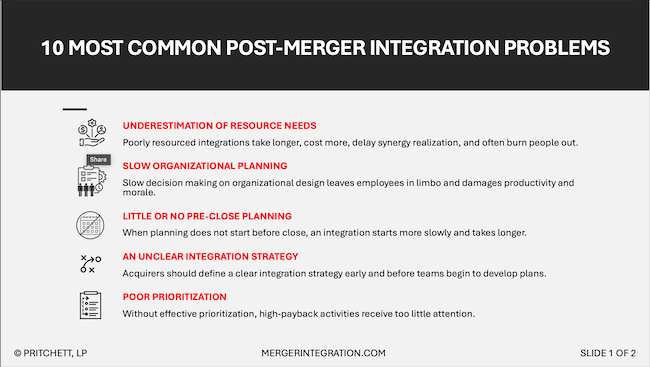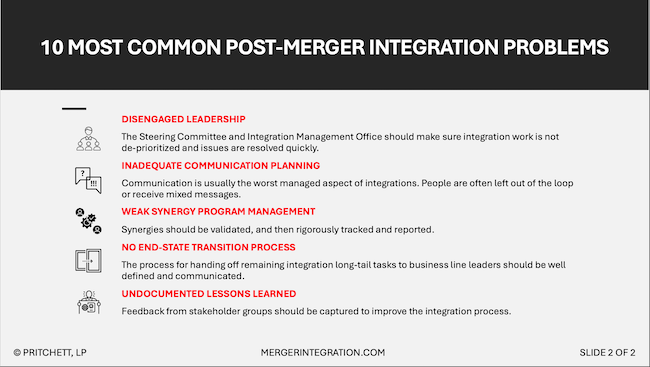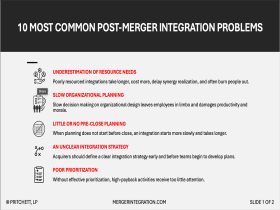UNDERESTIMATION OF RESOURCE NEEDS
Poorly resourced integrations take longer, cost more, delay synergy realization, and often burn people out.
SLOW ORGANIZATIONAL PLANNING
Slow decision making on organizational design leaves employees in limbo and damages productivity and morale.
LITTLE OR NO PRE-CLOSE PLANNING
When planning does not start before close, an integration starts more slowly and takes longer.
AN UNCLEAR INTEGRATION STRATEGY
Acquirers should define a clear integration strategy early and before teams begin to develop plans.
POOR PRIORITIZATION
Without effective prioritization, high-payback activities receive too little attention.
DISENGAGED LEADERSHIP
The Steering Committee and Integration Management Office should make sure integration work is not de-prioritized and issues are resolved quickly.
INADEQUATE COMMUNICATION PLANNING
Communication is usually the worst managed aspect of integrations. People are often left out of the loop or receive mixed messages.
WEAK SYNERGY PROGRAM MANAGEMENT
Synergies should be validated, and then rigorously tracked and reported.
NO END-STATE TRANSITION PROCESS
The process for handing off remaining integration long-tail tasks to business line leaders should be well defined and communicated.
UNDOCUMENTED LESSONS LEARNED
Feedback from stakeholder groups should be captured to improve the integration process.



